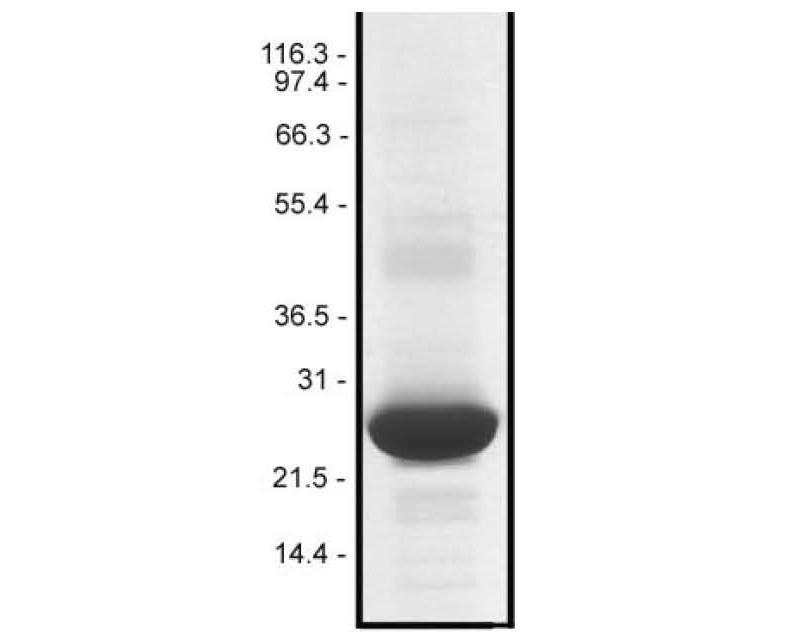Rac2 protein: His tagged: human wild type
Product Uses Include
- Rac biochemistry
- Rac2 GTPase assays
- Rac2 nucleotide exchange assays
- Rac2 binding studies
Material
The human Rac2 protein has been produced in a bacterial expression system. The protein is supplied as a lyophilized powder. When it is reconstituted in distilled water to 1 mg/ml, the protein is in the following buffer: 2 mM Tris pH 7.6, 0.5 mM MgCl2, 0.5% sucrose, 0.1% dextran. Protein concentration is determined by the Precision Red Advanced Protein Assay Reagent, Cat. # ADV02.
The recombinant protein is 22 kDa, consisting of the Rac1 protein plus a histidine tag in the amino-terminus.
For other forms of Rac2 as well as many other purified small G-proteins, see our main small G-protein product page.
Purity
Purity is determined by scanning densitometry of proteins on SDS-PAGE gels. His-Rac2 samples are >90% pure.

Figure 1: His-Rac2 protein purity determination. A 10 µg sample of RC01 (His-Rac2 molecular weight approx. 22 kDa) was separated by electrophoresis in a 12% SDS-PAGE system. The protein was stained with Coomassie Blue.
Biological Activity
The biological activity of RC02 is determined by its ability to exchange nucleotide. This is tested by a pulldown assay using GST-tagged PAK-PBD beads (Cat. # PAK02) and GTPγS (Cat. # BS01) or GDP loaded His-Rac2. The PAK protein is an effector of Rac2, and will specifically bind to the GTP bound form Rac2. Using this assay, the amount of biologically active GTP-bound Rac2 is determined. Stringent quality control ensures that >80% of the His-Rac2 protein produced is capable of binding GTP.
For product Datasheets and MSDSs please click on the PDF links below. For additional information, click on the FAQs tab above or contact our Technical Support department at tservice@cytoskeleton.com
Coming soon! If you have any questions concerning this product, please contact our Technical Service department at tservice@cytoskeleton.com
